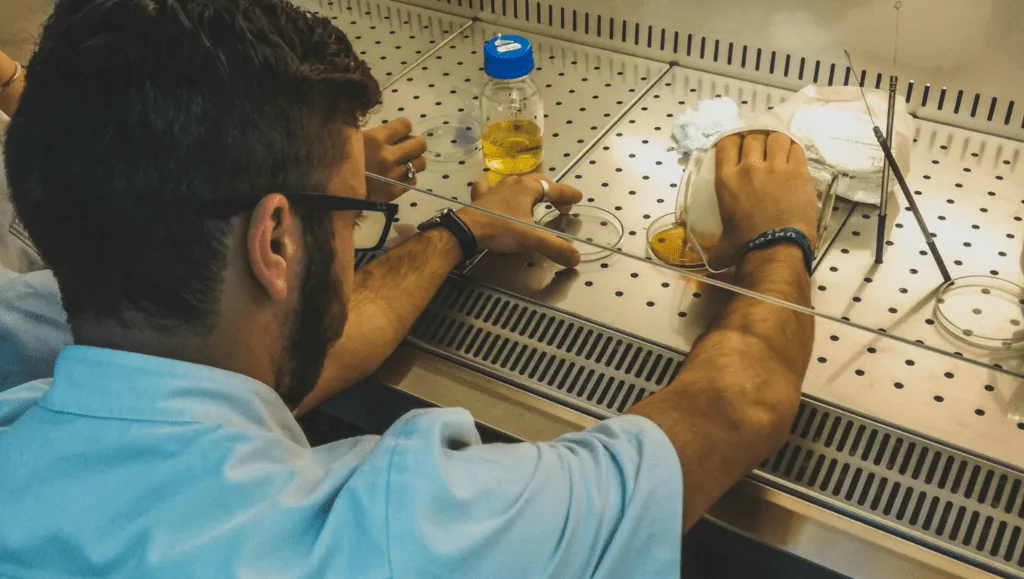Biosafety cabinets (BSCs) are essential laboratory equipment used to protect personnel, the environment, and valuable biological samples from hazardous materials. Choosing the right biosafety cabinet is crucial for ensuring laboratory safety and compliance with regulations, especially in South Africa.
In this article, we will explore the key technical specifications of biosafety cabinets, help you understand the differences between biosafety cabinets and laminar flow hoods, and emphasize the importance of NRCS certification. By the end of this guide, you’ll be prepared to make an informed decision when selecting a biosafety cabinet for your laboratory.
1. Understanding the Purpose of a Biosafety Cabinet
A biosafety cabinet is an enclosed, ventilated workspace designed to provide a safe environment for handling biological materials, including infectious agents. They offer protection for:
- Personnel – Preventing exposure to hazardous pathogens.
- Samples – Safeguarding the integrity of biological research.
- The Environment – Containing contaminants and preventing their release.
Equipped with high-efficiency particulate air (HEPA) or ultra-low penetration air (ULPA) filters, biosafety cabinets ensure a contamination-free working environment.
2. Biosafety Cabinet vs. Laminar Flow Hoods: What’s the Difference?
Although biosafety cabinets and laminar flow hoods may appear similar, they serve very different functions. It’s important to understand these differences to ensure your laboratory equipment meets your safety needs.
| Feature | Biosafety Cabinet | Laminar Flow Hood |
| Protection | Protects personnel, samples, and the environment | Only protects the sample |
| Airflow Direction | Air is filtered before release into the environment | Air is directed toward the user, increasing contamination risk |
| Usage | Handling infectious or hazardous biological materials | Handling sterile, non-hazardous materials |
| Safety | Compliance Required for biohazard work | Not suitable for biohazard materials |
For microbiological work involving pathogens, a biosafety cabinet is necessary. Laminar flow hoods should never be used with infectious agents as they don’t protect the user from exposure.
3. Types of Biosafety Cabinets
There are three main classes of biosafety cabinets, each offering varying levels of protection.
- Class I BSC: Provides protection for personnel and the environment but not the sample. Suitable for low-risk biological agents.
- Class II BSC (Most Common): Offers protection for personnel, samples, and the environment. Ideal for pathogens in Biosafety Levels (BSL) 1-3.
- Class III BSC: Also known as a glove box, it provides the highest level of protection, used for Biosafety Level 4 (BSL-4) pathogens.
The Class II Type A2 BSC is the most commonly used, balancing safety, usability, and cost.
4. Key Technical Specifications to Consider
When selecting a biosafety cabinet, consider the following specifications to ensure safety and performance:
4.1 Airflow Velocity & Filtration Efficiency
- HEPA or ULPA filters should capture 99.99% of airborne contaminants.
- Air velocity must adhere to international and NRCS standards for containment.
4.2 Work Area Size
- Biosafety cabinets come in different sizes (e.g., 3ft, 4ft, 6ft). Select the size that matches your laboratory space and sample load.
4.3 Ergonomics & User Comfort
- Adjustable height and sloped glass improve visibility and reduce strain during use.
- Low noise and vibration levels are essential for comfort during long working hours.
4.4 Alarm & Monitoring Systems
- Digital displays monitor airflow and filter efficiency.
- Alarms trigger for any issues with airflow or filter saturation.
4.5 Energy Efficiency
- Some modern biosafety cabinets use ECM motors for lower energy consumption.
- LED lighting reduces heat output, improving energy efficiency.
5. NRCS Certification: A Legal Requirement in South Africa
In South Africa, biosafety cabinets must be certified by the National Regulator for Compulsory Specifications (NRCS) to ensure safety compliance.
Why Is NRCS Certification Important?
- Legal Compliance: The NRCS regulates biosafety cabinets under environmental and health laws in South Africa.
- Quality Assurance: Certification ensures that the biosafety cabinet meets the necessary safety standards.
- Workplace Safety: Protects laboratory personnel from exposure to harmful biological agents.
6. Optional Features & Accessories
Enhance your biosafety cabinet with various accessories designed to improve safety and efficiency:
| Feature | Benefit |
| UV Sterilization | Helps eliminate residual contaminants before and after use. |
| Exhaust Connection Kit | Needed for external ducting of Class II Type B1 and B2 BSCs. |
| Gas & Vacuum Valves | Provides essential utilities within the cabinet. |
| Additional HEPA Filters | Enhances air purification, especially for high-risk applications. |
Select accessories based on your laboratory’s workflow and safety needs.
7. Maintenance & Best Practices for Longevity
To keep your biosafety cabinet in top condition, follow these essential maintenance practices:
Regular Maintenance
- Filter replacement is vital for maintaining airflow and filter efficiency.
- Airflow certification ensures the cabinet is functioning correctly.
Best Usage Practices
- Keep air grills unobstructed for proper airflow.
- Perform regular decontamination with appropriate disinfectants.
Conclusion: Ensuring Safety with the Right Biosafety Cabinet
Choosing the right biosafety cabinet for your laboratory is critical for both safety and compliance. Key takeaways:
- Understand the differences between biosafety cabinets and laminar flow hoods.
- Choose the correct class for your laboratory work.
- Verify NRCS certification to meet South African standards.
- Consider technical specifications, including airflow, filtration, and ergonomics.
For high-quality, NRCS-certified biosafety cabinets, explore our range from Being International. Visit Apex Scientific today to browse our offerings and speak with our experts for personalized advice on selecting the ideal biosafety cabinet for your needs.




